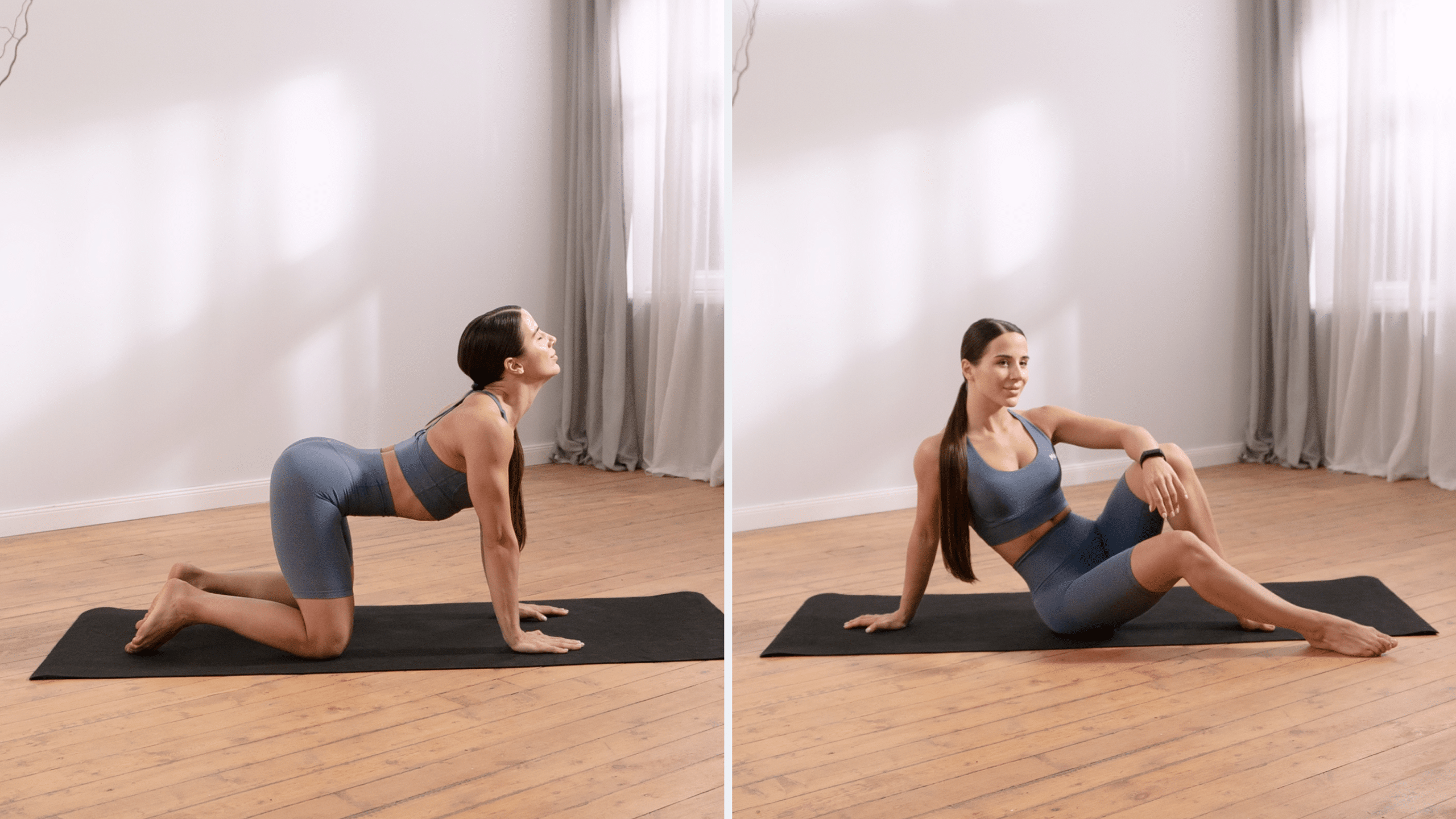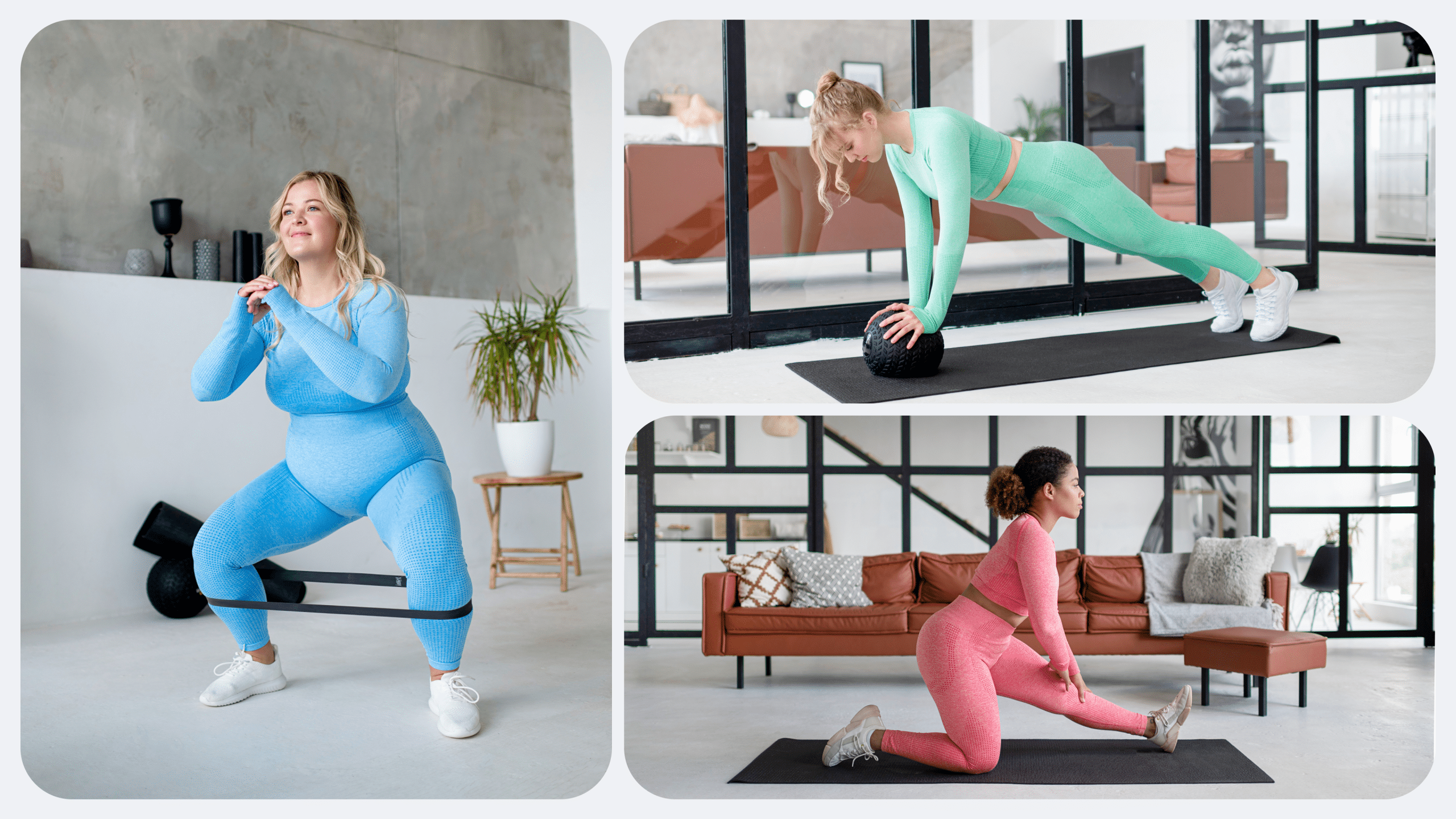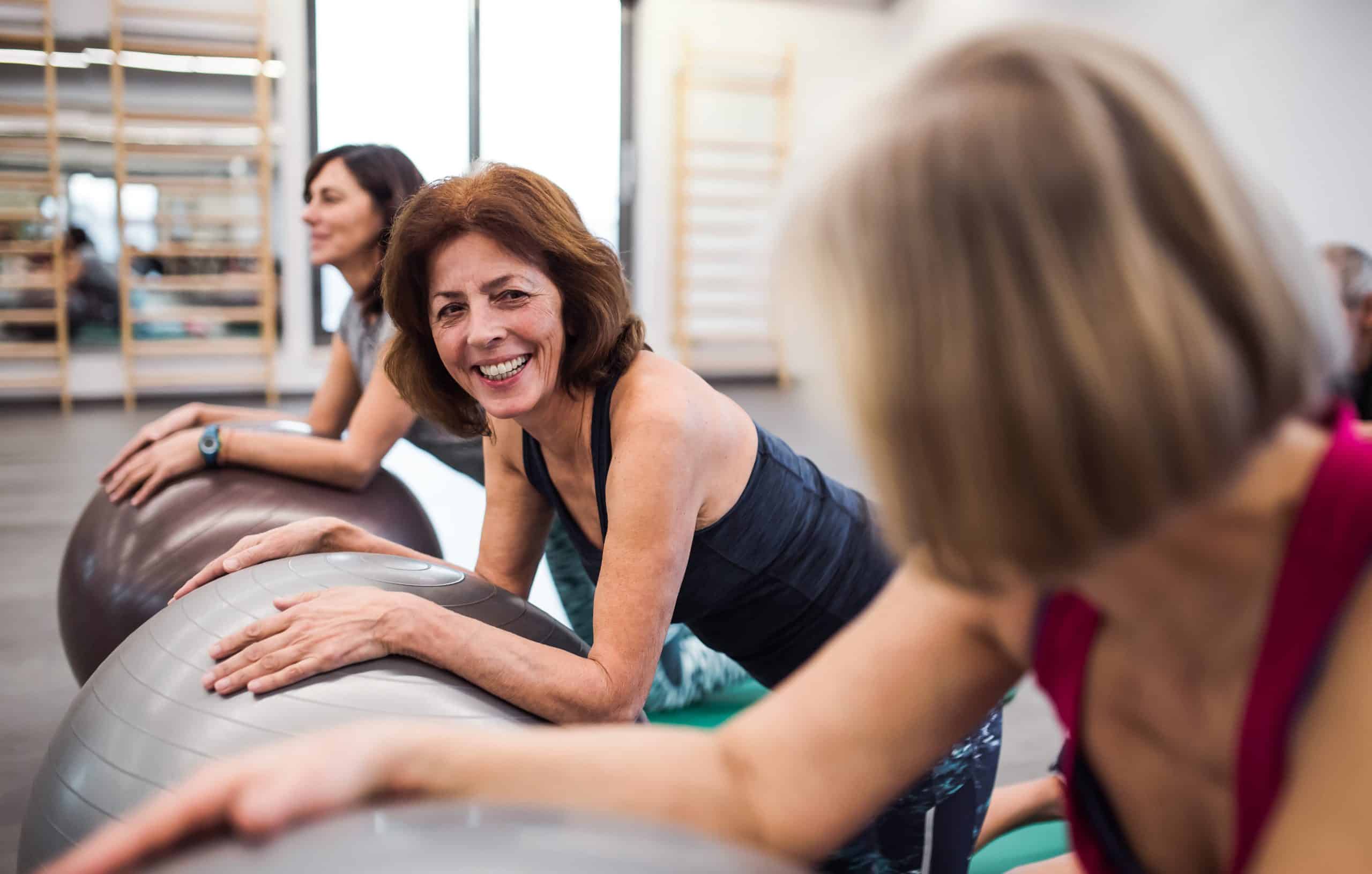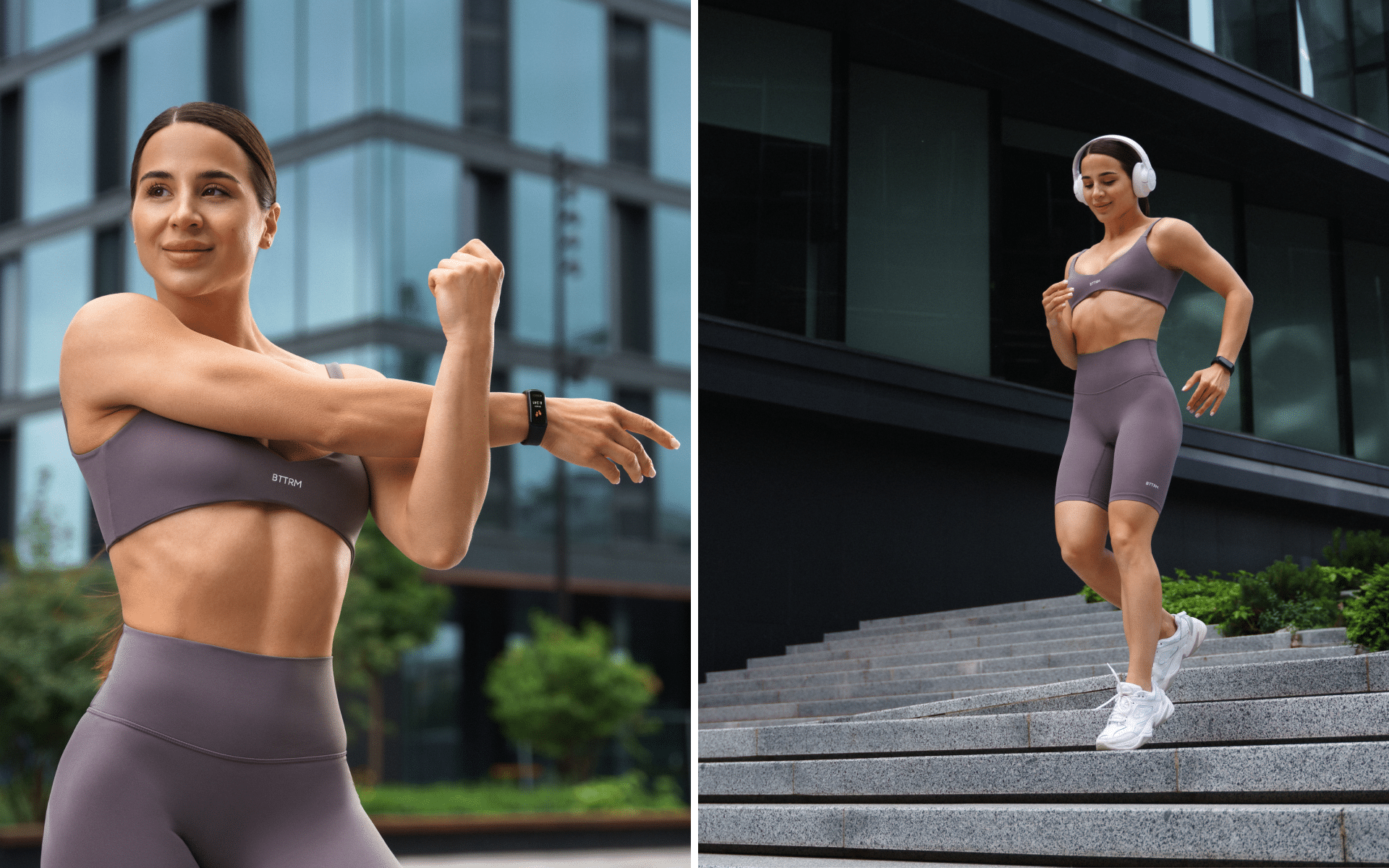The bumpy, dimpled appearance of cellulite is caused by fat deposits pushing against the connective tissue under the skin. This can happen anywhere on the body, but is most common in the thighs, buttocks, and arms (1).
While it’s not a serious medical condition, cellulite can be unsightly and difficult to get rid of.
Unfortunately, there are many misconceptions about what causes cellulite and how to treat it. In reality, there’s no certain way to prevent or get rid of cellulite completely. However, there are some things you can do to help minimize the appearance of cellulite.
Read on to learn about the causes of cellulite on arms, in addition to some treatment and prevention tips.
What Is Cellulite?
Cellulite is a common, harmless skin condition that causes a lumpy, dimpled appearance on the thighs, hips, buttocks, and abdomen. It occurs when fat deposits push through the connective tissue beneath the skin (1).
This condition is more prevalent in women due to differences in fat distribution, muscle, and connective tissue. Men can also experience cellulite, but it is less common (1).
Anatomically, cellulite involves fibrous septae that connect the skin to the underlying muscle, with fat lying between these layers. When fat cells accumulate, they push against the skin while the long, tough cords pull down, which creates an uneven surface or dimpling (2).
Although cellulite can be influenced by hormonal changes, genetics, diet, and lifestyle factors, it isn’t indicative of an underlying health problem.
Is It OK to Have Cellulite?
Having cellulite is completely normal and isn’t a cause for concern. It’s estimated that 80-90% of women have some degree of cellulite, which makes it a very common condition (2).
Cellulite can occur in individuals of all shapes, sizes, and ages. It’s not exclusive to those who are overweight or inactive. Even thin individuals can have cellulite due to genetic predisposition or hormonal changes.
It’s important to remember that having cellulite doesn’t define your health or beauty. It is a natural occurrence and doesn’t necessarily reflect an individual’s lifestyle choices.
BetterMe will keep you laser-focused on your weight loss journey! Nutrient-packed meal plans, fat-blasting workouts, galvanizing challenges and much more. Try using the app and see for yourself!
What Is the Primary Cause of Cellulite?
There is no single cause for cellulite, as it can be influenced by a combination of factors (1). Hormonal changes, genetics, lifestyle choices, and even clothing can all play roles in the development of cellulite.
This same research suggests that estrogen, insulin, thyroid hormones, and prolactin may contribute to cellulite formation. These hormones can affect the structure and function of connective tissue and fat cells.
Genetics also plays a significant role in the development of cellulite. If your parents or other family members have cellulite, you’re likely to develop it too.
Lifestyle factors such as a sedentary lifestyle, poor diet, and smoking can also contribute to the appearance of cellulite. These factors can affect the body’s fat storage and circulation, which makes it easier for cellulite to form.
Lastly, tight clothing that restricts blood flow can also contribute to the development of cellulite by limiting healthy circulation and increasing fluid retention in certain areas of the body.
Why Do I Have Cellulite on My Arms?
While cellulite is most commonly seen on the thighs, hips, buttocks, and abdomen, it can also appear on other areas of the body, including the arms.
The primary reason for developing cellulite on the arms is a lack of muscle tone. As we age, our skin loses elasticity and becomes thinner due to the breakdown of collagen and elastin fibers. This makes it easier for fat deposits to push through and create the appearance of cellulite (18).
Any factors that contribute to loss of skin elasticity, such as hormonal changes or a sedentary lifestyle, can also contribute to the development of cellulite on the arms.
Again, it’s important to remember that cellulite on the arms is a normal occurrence and not a sign of poor health.
Can You Have Cellulite over Muscle?
Yes, it’s possible to have cellulite over muscle. In fact, cellulite can occur in individuals with a healthy amount of muscle mass.
As previously mentioned, cellulite is caused by the formation of fat deposits pushing through the connective tissue beneath the skin (2). This can happen regardless of how much muscle a person has.
In some cases, having more muscle may actually help reduce the appearance of cellulite by providing a firm and toned base for the skin. In addition, regular exercise can improve circulation and support healthy connective tissue, which reduces the likelihood of developing cellulite (3).
Read more: 10 Wall Pilates Arms Exercises, and Everything Else You Need for Toned Arms
Can You Realistically Get Rid of Cellulite?
Realistically, it’s challenging to completely get rid of cellulite. While various treatments and products claim to reduce its appearance, they may not provide long-lasting results.
A healthy diet, exercise, and maintaining a regular body weight can help improve the appearance of cellulite by reducing fat deposits and supporting healthy connective tissue (7) (8). However, even with these measures in place, a certain degree of cellulite may still be present.
It’s important to have realistic expectations and not to feel pressured to completely “get rid” of cellulite. Remember, cellulite is normal and doesn’t define your health or beauty. Embracing and loving your body as it is may ultimately be the best way to deal with cellulite.
In a previous piece, How to Get Rid of Stomach Overhang, we emphasize the importance of body acceptance and self-love, regardless of physical appearance. This sentiment also applies to cellulite. While it’s completely normal to want to improve the appearance of cellulite, it’s also important to prioritize overall health and self-acceptance.
How to Get Rid of Cellulite on Your Arms
There are several available treatments that can help improve the appearance of cellulite. However, it’s important to remember that there is no cure for cellulite.
These treatments can help temporarily reduce the appearance of cellulite, but the results are not permanent.
Some of the most common treatments for cellulite include:
1. Exercise
Exercise helps reduce cellulite in several ways (8). First, it helps burn fat. When you exercise, you can create an energy deficit in your body as long as you don’t go over your daily caloric intake limit. An energy deficit means that you’re burning more calories than you’re consuming (10).
As a result, your body will start to burn stored fat for energy. This includes the fat cells that make up cellulite.
Second, exercise helps build muscle (12). When you have more muscle, your skin will appear tighter and smoother. This can help camouflage the appearance of cellulite.
Finally, exercise helps improve circulation. Poor circulation can contribute to the development of cellulite. Exercise helps increase blood flow and lymphatic drainage (9). This can help reduce the appearance of cellulite.
So which exercises can you do to target arm fat?
- Cardiovascular exercises. These target overall fat loss that can reduce the appearance of cellulite. You should aim for 30 minutes of cardiovascular exercise most days of the week.
- Strength-training exercises. These help build muscle and improve circulation. Incorporate strength-training exercises into your routine 2 to 3 times per week. Focus on compound exercises that work multiple muscle groups at once, such as squats, lunges, and presses.
- Targeted exercises. Some specific exercises can help tone the muscles in your arms and reduce the appearance of cellulite. These are commonly referred to as isolated exercises.
Targeted arm exercises include:
- Bicep curls
- Tricep kickbacks
- Overhead presses
In a previous blog post, How Long Does It Take To Get In Shape, we discussed timelines and fitness goals in detail.
2. Diet
Eating plenty of fruits, vegetables, and lean protein can help improve the appearance of your skin and reduce cellulite (7).
Several foods can help reduce the appearance of cellulite. These foods work by improving circulation and promoting lymphatic drainage.
Some of the best foods for cellulite are:
- Water. Water is essential for proper circulation. It helps flush out toxins and keep the skin hydrated.
- Cinnamon. Cinnamon is a spice that helps increase circulation. It also has anti-inflammatory properties that can help reduce the appearance of cellulite (11).
- Cayenne pepper. Cayenne pepper has thermogenic properties that can help burn fat (6).
- Ginger. Ginger is a spice that helps increase circulation and promote lymphatic drainage (11).
- Parsley. Parsley is a herb that contains chlorophyll (14), which helps detoxify the body and improve circulation.
- Turmeric. Turmeric is a spice that has anti-inflammatory properties (11). It can help reduce the appearance of cellulite.
- Bright, colorful fruits and vegetables. Fruits and vegetables that are high in antioxidants can help improve circulation and reduce the appearance of cellulite. These include berries, cherries, citrus fruits, leafy greens, and tomatoes.
- Oily fish. Oily fish such as salmon contain omega-3 fatty acids that help keep the skin supple and hydrated (20). They can also help reduce inflammation.
- Nuts and seeds. Nuts and seeds are excellent sources of omega-3 fatty acids. They also contain fiber, which can help promote circulation.
If you’re overweight, you should consider creating a calorie deficit through your diet.
Here’s how it works:
- Calorie Deficit. You burn more calories than you consume.
- Thermogenesis. The process of burning calories to produce heat.
When you create a calorie deficit, your body must find a way to make up for the lost energy. One way it does this is by tapping into stored fat reserves. As your body burns fat for energy, the fat cells that make up cellulite can be reduced.
You can find more mealtime inspiration in our blog, Best Diet for 40-Year-Old Women.
3. Topical Treatments
Many topical treatments can help improve the appearance of cellulite. These treatments work by breaking down the fat cells that make up cellulite.
The most common topical treatments include:
- Creams and lotions. These treatments are applied to the skin. They work by breaking down the fat cells and promoting circulation.
- Gels and patches. These treatments are also applied to the skin. They work by delivering active ingredients directly to cellulite.
The main ingredient in most cellulite treatments is caffeine. Caffeine is a potent fat burner that helps break down fat cells and promote circulation (15). This can help reduce the appearance of cellulite.
Other ingredients that are often used in cellulite treatments include retinoids, green tea extract, and vitamin C.
Retinoids are a type of vitamin A that helps improve the appearance of skin by increasing collagen production (17).
Green tea extract is a potent antioxidant that helps protect the skin from damage and promote circulation (16).
Vitamin C is a powerful antioxidant that helps brighten skin and even out tone (21).
4. Massage
Massage is another popular cellulite treatment. It helps increase blood flow and lymphatic drainage, which can help reduce the appearance of cellulite (13).
Several different types of massage can be used to treat cellulite, including:
- Endermologie. This is a type of mechanical massage that uses suction and rolling to stimulate the skin.
- Cellulaze. This is a laser treatment that helps break down the fat cells and promote circulation.
- Body wraps. This is a type of treatment that involves wrapping the body in a cloth or plastic wrap. It helps increase circulation and promote lymphatic drainage.
5. Dermatological Treatments
It can take several weeks or months to see changes in the appearance of cellulite from home remedies and lifestyle changes. If you want to see more immediate results, several dermatological treatments can help.
These treatments work by breaking down the fat cells that make up cellulite.
Some of the most common treatments are(22):
- Lasers. Lasers are a popular cellulite treatment. They work by breaking down the fat cells and promoting circulation.
- Radiofrequency. Radiofrequency is another popular cellulite treatment. It works by heating the tissue and breaking down the fat cells.
- Ultrasound. Ultrasound is a newer treatment for cellulite. It works by delivering sound waves to the tissue and breaking down the fat cells.
These treatments can be effective, but they are often expensive. They may also require multiple treatments before you see results.
BetterMe app will kick you out of the mental funk, shake off your extra weight, rid you off your energy-zapping habits, and help you sculpt the body of your dreams. Intrigued? Hurry up and change your life for the better!
How to Avoid Cellulite
There are some things you can do to prevent cellulite from forming, including:
Maintaining a Healthy Weight
Most people don’t realize that being overweight or obese can contribute to the development of cellulite (f). If you’re carrying around extra weight, it’s important to lose it. Not only will this help reduce the appearance of cellulite, it will also improve your overall health.
Quitting Smoking
Smoking is one of the worst things you can do for your skin. It decreases circulation, which can lead to cellulite. It also damages collagen and elastin, which are key components of healthy skin (4).
If you smoke, quitting is one of the best things you can do for your skin and your health in general.
Avoiding Caffeine and Alcohol
Caffeine and alcohol are both diuretics, which means they cause your body to lose water (19). When your body is dehydrated, it’s more likely to develop cellulite. So, if you want to avoid cellulite, you should limit your intake of caffeine and alcohol.
Dry Brushing for Lymphatic Drainage
Dry brushing is a simple, at-home treatment that can help improve the appearance of cellulite. It’s believed to help promote lymphatic drainage, which can reduce the appearance of cellulite.
You’ll need a natural bristle brush. Start at your feet and brush upward towards your heart. Do this for 3 to 5 minutes before showering.
Wearing Compression Clothing
Compression clothing is designed to apply pressure to your skin. This helps promote circulation and lymphatic drainage (5). Wearing compression clothing can help to reduce the appearance of cellulite.
You can find compression clothing at most sporting goods stores. Look for items that are specifically designed to help with cellulite, such as shorts or leggings.
Read more: Calisthenics Arm Workouts: Build Massive Arms Without The Gym
The Bottom Line
Cellulite on the arms is a common problem, but there are steps you can take to prevent it, including maintaining a healthy weight, quitting smoking, and avoiding caffeine and alcohol.
The key takeaway is that an active lifestyle and healthy dietary habits are the best ways to avoid developing cellulite and improve the appearance of existing cellulite. If you’re looking for more immediate results, there are several dermatological treatments that can help. Remember to contact a medical professional before you undergo any of these suggested treatments. Even with exercise, it’s best to get the opinion of a professional to ensure you can complete any given workout.
DISCLAIMER:
This article is intended for general informational purposes only and does not serve to address individual circumstances. It is not a substitute for professional advice or help and should not be relied on for making any kind of decision-making. Any action taken as a direct or indirect result of the information in this article is entirely at your own risk and is your sole responsibility.
BetterMe, its content staff, and its medical advisors accept no responsibility for inaccuracies, errors, misstatements, inconsistencies, or omissions and specifically disclaim any liability, loss or risk, personal, professional or otherwise, which may be incurred as a consequence, directly or indirectly, of the use and/or application of any content.
You should always seek the advice of your physician or other qualified health provider with any questions you may have regarding a medical condition or your specific situation. Never disregard professional medical advice or delay seeking it because of BetterMe content. If you suspect or think you may have a medical emergency, call your doctor.
SOURCES
- Cellulite: a cosmetic or systemic issue? Contemporary views on the etiopathogenesis of cellulite (2018, ncbi.nlm.nih.gov)
- Cellulite: Current Understanding and Treatment (2023, ncbi.nlm.nih.gov)
- Cellulite – Diagnosis and treatment (2023, mayoclinic.org)
- Cigarettes Smoking and Skin: A Comparison Study of the Biophysical Properties of Skin in Smokers and Non-Smokers (2019, ncbi.nlm.nih.gov)
- Compression Garments for Medical Therapy and Sports (2018, mdpi.com)
- Dietary capsaicin and its anti-obesity potency: from mechanism to clinical implications (2017, ncbi.nlm.nih.gov)
- Does a Controlled Diet Improve Cellulite? (2016, openaccesspub.org)
- Effect of weight loss on cellulite: gynoid lypodystrophy(2006, pubmed.ncbi.nlm.nih.gov)
- Exercise and the Lymphatic System (2012, link.springer.com)
- Fat loss depends on energy deficit only, independently of the method for weight loss (2007, pubmed.ncbi.nlm.nih.gov)
- Herbs and Spices- Biomarkers of Intake Based on Human Intervention Studies – A Systematic Review (2019, biomedcentral.com)
- Increasing Lean Mass and Strength: A Comparison of High Frequency Strength Training to Lower Frequency Strength Training (2016, ncbi.nlm.nih.gov)
- Objective and subjective reduction of cellulite volume using a localized vibrational massage device in a 24‐week randomized intra‐individual single‐blind regression study (2019, onlinelibrary.wiley.com)
- Parsley: a review of ethnopharmacology, phytochemistry and biological activities (2013, pubmed.ncbi.nlm.nih.gov)
- Physiological process of fat loss (2019, springeropen.com)
- Protective Mechanisms of Green Tea Polyphenols in Skin (2012, hindawi.com)
- Retinoids: active molecules influencing skin structure formation in cosmetic and dermatological treatments (2019, ncbi.nlm.nih.gov)
- Skin Aging and Cellulite in Women (2015, researchgate.net)
- The diuretic effects of alcohol and caffeine and total water intake misclassification (1999, pubmed.ncbi.nlm.nih.gov)
- The Potential Uses of Omega-3 Fatty Acids in Dermatology: A Review (2020, pubmed.ncbi.nlm.nih.gov)
- The Roles of Vitamin C in Skin Health (2017, mdpi.com)
- Treatment for cellulite (2019, sciencedirect.com)









